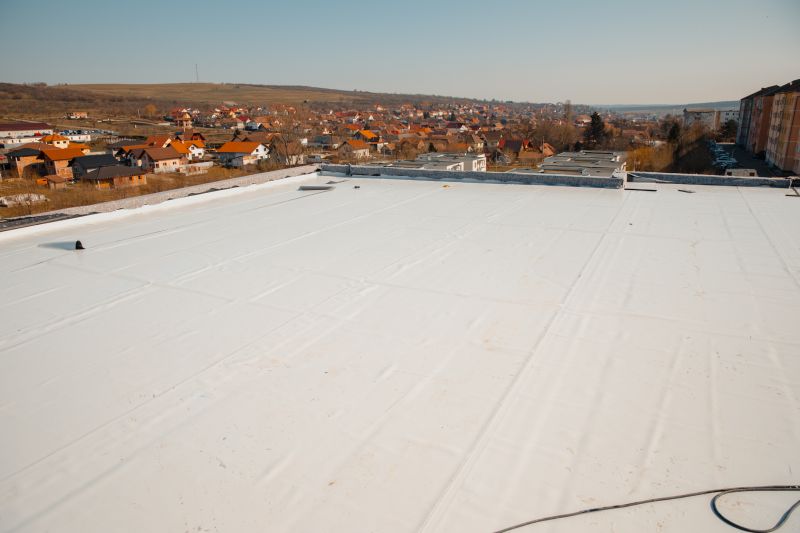Top Waterproofing Products for Reliable Protection
Discover the most effective waterproofing solutions designed to keep your property dry and secure in any conditions.
 Waterproofing products play a crucial role in protecting structures from moisture intrusion, which can lead to damage, mold growth, and structural deterioration over time. Whether for residential, commercial, or industrial applications, selecting the right waterproofing solutions is essential to ensure long-lasting protection. From foundational barriers to surface coatings, a wide variety of products are available to address different needs and environments.
Waterproofing products play a crucial role in protecting structures from moisture intrusion, which can lead to damage, mold growth, and structural deterioration over time. Whether for residential, commercial, or industrial applications, selecting the right waterproofing solutions is essential to ensure long-lasting protection. From foundational barriers to surface coatings, a wide variety of products are available to address different needs and environments.
Top Overall Option
Comprehensive Waterproofing Membrane System
A versatile and durable waterproofing membrane system that can be applied to various surfaces including foundations, roofs, and decks. It provides a seamless barrier against water intrusion and is suitable for both new constructions and retrofit projects. Its flexibility and adhesion properties make it a reliable choice for long-term moisture protection.
Types of Products For Waterproofings
Liquid Rubber Coatings
Flexible and seamless coatings that form a waterproof layer on roofs, decks, and foundations, ideal for irregular surfaces.
Bituminous Membranes
Traditional asphalt-based sheets used for roofing and foundation waterproofing, known for their durability and resistance to moisture.
Polyurethane Sealants
High-performance sealants suitable for joints, cracks, and seams to prevent water penetration.
Cementitious Waterproof Coatings
Waterproof coatings that can be applied directly to concrete and masonry surfaces, often used in basements and tunnels.
Liquid Waterproofing Membranes
Spray or brush-applied membranes that create a continuous waterproof layer, useful for complex geometries.
Waterproofing Paints
Specialized paints formulated to resist water penetration, suitable for exterior walls and surfaces.
Bitumen Coatings
Thick, tar-like coatings that provide a protective barrier against moisture and are often used on foundations.
Sheet Waterproofing Membranes
Pre-formed sheets that are adhered to surfaces to create a waterproof barrier, often used in roofing and basements.
Hydrophobic Sealants
Sealants that repel water on contact, ideal for sealing joints and cracks.
Epoxy Waterproof Coatings
Resilient coatings suitable for areas exposed to water and chemicals, such as industrial floors.
Spray-On Waterproofing
Convenient spray-applied solutions for quick coverage on large surfaces or irregular shapes.
Waterproofing Tapes
Self-adhesive tapes used for quick sealing of cracks and joints.
Polymer Modified Cement
Enhanced cement mixes with polymer additives for improved waterproofing capabilities.
Crystalline Waterproofing
Chemical treatments that penetrate concrete to form a permanent waterproof barrier.
Waterproofing Fabrics and Mats
Flexible fabrics used as underlayments or barriers in waterproofing systems.
Popular Choices
Widely used for their flexibility and seamless application on roofs and decks.
Commonly chosen for their proven durability in foundation and roofing projects.
Popular for sealing joints and cracks in various construction applications.
Favored for basement waterproofing due to ease of application on concrete surfaces.
Often selected for exterior walls to provide an extra layer of moisture resistance.
Preferred for large surface areas requiring a reliable, pre-fabricated barrier.
Chosen for industrial and commercial settings needing chemical and water resistance.
Popular for its fast application and ability to cover complex geometries.
Commonly used for sealing cracks and joints in various structures.
Valued for its ability to provide long-term, permanent waterproofing in concrete.
Convenient for quick repairs and sealing small cracks or joints.
Chosen for enhanced adhesion and waterproofing in concrete applications.
Used as underlayments or barriers in layered waterproofing systems.
Proper waterproofing begins with understanding the specific requirements of the area to be treated. For basements and foundations, sealants and membranes are commonly used to create a moisture-resistant barrier. Roofs and exterior walls benefit from specialized coatings that repel water while allowing vapor to escape, preventing trapped moisture that can cause damage. Interior spaces, such as bathrooms and kitchens, require waterproofing solutions that are both durable and safe for indoor use.
Choosing the appropriate waterproofing products involves considering factors such as the type of surface, exposure level, and environmental conditions. Some products are designed for temporary protection during construction, while others offer permanent solutions for ongoing moisture control. Proper application and maintenance are also vital to ensure the effectiveness of these products over time, helping to preserve the integrity and value of the property in Fishers, IN, and beyond.
Key Buying Considerations
- Determine the specific area and surface type requiring waterproofing to select the most suitable product.
- Consider the environmental exposure, including exposure to UV rays, temperature fluctuations, and moisture levels.
- Assess whether a flexible, elastic product is needed to accommodate surface movement or settling.
- Evaluate the longevity and durability of the product based on your project’s requirements.
- Check compatibility with existing materials and surfaces to ensure proper adhesion and performance.
- Review application methods—some products require specialized tools or techniques.
- Consider whether a temporary or permanent waterproofing solution is desired.
- Ensure the product is suitable for the specific climate conditions of Fishers, IN.
- Look into maintenance and reapplication needs over time.
- Verify safety data and VOC content, especially for indoor applications.
- Assess the ease of application, including drying time and curing process.
- Determine if the product provides a seamless barrier or if joints and seams need additional sealing.
- Check for any building code or local regulation compliance.
- Consider cost-effectiveness in relation to the coverage area and lifespan.
- Review user feedback and product ratings for insights into real-world performance.
This content contains affiliate links. We may earn a commission if you make a purchase through these links, at no additional cost to you.
